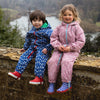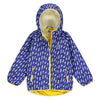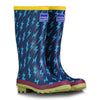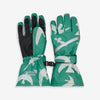Learning Objective
Use fieldwork to observe, measure, record and present the human and physical features in the local area using a range of methods, including sketch maps, plans and graphs, and digital technologies.
Resources
- Squared paper
- Camera
- Compasses
- Pencils
- Tablets
Introduction Activity
Using the class whiteboard, display an aerial photograph of the school. Discuss together the physical and human features of the school landscape. Talk about ways in which the school grounds can be improved to provide opportunities for learning and play, and what and how the class can make a plan to look after wildlife features or areas that might already exist.
Activity
Divide the class in to groups and assign each group an area of the grounds that they will map. The group needs to walk around the site, looking at the following areas – physical attributes, trees, natural features, slopes or hills, ground surface, buildings and boundaries. Mapping on paper the physical attributes, by drawing a representation of the area including the attributes the children have seen. Ask the children to take pictures of these features. Then the group can draw or make a plan of how they think this area can be improved, for example by planting another tree, inserting a litter bin, introducing a vegetable bed. The plan needs to be modest and achievable! Ask the children to take pictures of the areas they would like to change. Come back together and discuss as a class what plans could be put in place to provide learning and play and wildlife areas. Create an account on the Sylva Foundation website for MyForest. Together as a class, locate the school via the school grid reference. Using the site instructions and the children’s maps and plans, create a school ground management plan









